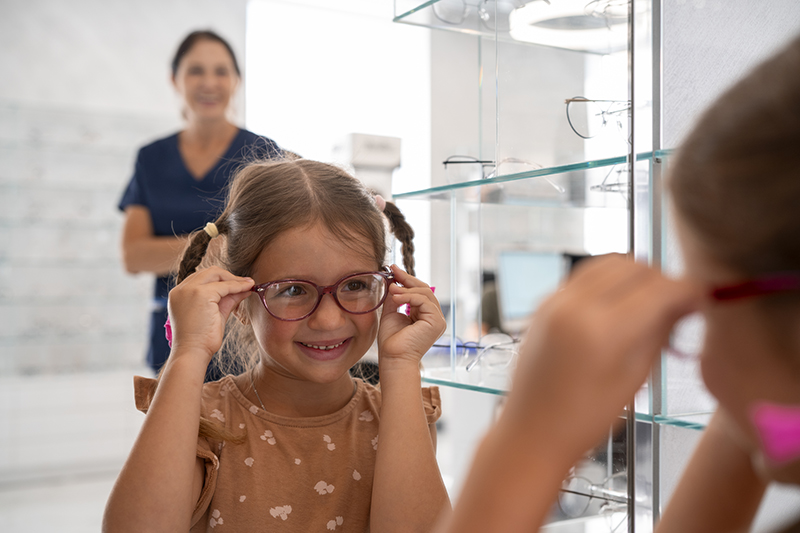Back‑to‑school is the perfect time to check your child’s eyes. School screenings are helpful, but they are not the same as a full eye exam with an eye doctor. Knowing the difference can save a child months of struggling with headaches, reading difficulties, or sports frustration.
Screenings and exams do different jobs
A vision screening is a quick check that looks for signs a child may need a referral. Screenings are efficient for identifying issues, then routing a child to an eye doctor for a full evaluation if needed. American Academy of Ophthalmology
A comprehensive eye exam is performed by an optometrist or ophthalmologist. It evaluates eye health, refractive error, focusing, eye teaming, and more, and it includes a plan for treatment when needed. CDC American Optometric Association
Why a screening is not a replacement
School health and public health organizations clearly note that screening does not replace a comprehensive eye examination. Families should be informed that screening may miss problems, and a full exam is the gold standard for detection and care. Prevent Blindness
When to schedule exams for children
The American Optometric Association convened an expert panel that recommends routine comprehensive eye exams for children. For timing, AOA materials and professional summaries point to an exam between 6 and 12 months, at least once between ages 3 and 5, before first grade, then annually during school years. If your child has symptoms or risk factors, your doctor may recommend more frequent care.
Signs that deserve a closer look
If you notice squinting, sitting very close to books or screens, losing place while reading, frequent headaches, or avoidance of near work, ask your eye doctor about an exam. Early detection and treatment protect learning and confidence. CDC
What a comprehensive pediatric exam includes
During a full exam, the doctor assesses eye health, measures prescription, checks how well the eyes focus and align, and looks for conditions like amblyopia or convergence problems. This reference‑standard evaluation is the best way to identify issues that screenings can miss. American Optometric Association
How to use your Vision Care Direct benefits
- Check your plan: Many families have coverage for a comprehensive exam each year
- Pick the right provider: Use in‑network doctors to maximize benefits.
- Bring questions: Share classroom concerns, sports needs, or screen‑time habits.
Call to action: Book your child’s comprehensive eye exam this month. If you have Vision Care Direct, log in to confirm your benefits and find an in‑network provider.
